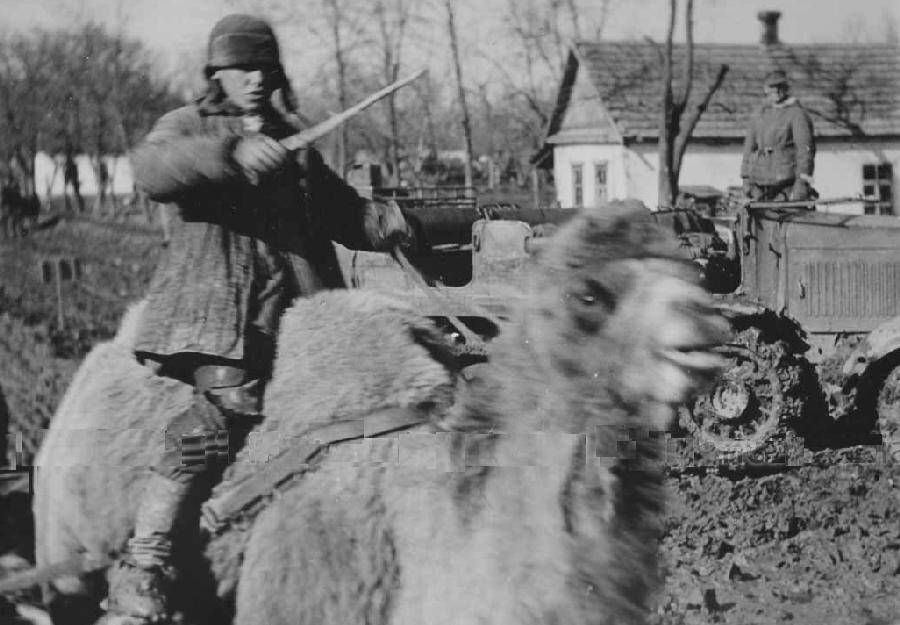
South of Stalingrad (October 1942)

Figure 1.--Case Blue as it developed involved splitting Army Group South. Army Group B with the 6th Army drove east toward Stalingrad. Army Group B drove south into the Caucasus. Inbetween was a vast sistance with virtually no German forces. Thus the two Armny Groups were unable to support each other. This photograp is unidentified, but we believe it was taken in October 1942 somewhwere south of Stalingrad. The German soldiers are clearly fascinated by the camel. Notice the roads the Germans had to contend with.
|
|
Case Blue as it developed involved splitting Army Group South. Army Group B with the 6th Army drove east toward Stalingrad. Army Group B drove south into the Caucasus. Inbetween was a vast sistance with virtually no German forces. Thus the two Armny Groups were unable to support each other. This photograp is unidentified, but we believe it was taken in October 1942 somewhwere south of Stalingrad. The German soldiers are clearly fascinated by the camel. Notice the roads the Germans had to contend with. We thought that the photograph might have been taken in the Caucasus or perhaps in the Crimea in a Tartar area. A Russian reader writes, "No, it can't be Crimea or Caucasus because camels were never used there for riding, getting milk, meat or wool. In the Soviet Union, such camels (Camelus Bactrianus) were (and are) widespread in Central Asia from West China through Tagikistan and Kazakhstan to such south Russian areas as Calmykia, Astrakhan and Volgograd (former Stalingrad). There the animals are widely used for riding, milking and getting wool, because a climate there is very hot and dry. Camels survive there, where horses and even sheep cannot. I travelled in steppes and deserts that surround Astrakhan - and there you can see such a picture even now, with typically Russian trees and houses -- and, in the same time, camels.
Population in villages there is formed mostly of Nogay (South Tatar) and Kalmyk people. If this picture was taken in 1942 by a German photorgapher, then it could be taken in some area south from Stalingrad, I suppose in the occupied part of Kalmyk Autonomous Republic." We know as a result, that this photograph was taken in October or very earl1942 before the first snowfall. The German did not reach beyond the Donbas in 1941. And as the trees have already fallen here, the photograph had to be taken in the fall.
HBC

Navigate the Boys' Historical Clothing Web Site:
[Return to Main spliting Army Group South page]
[Return to Main Stalingrad page]
[Return to Main World War II Second phase campaign page]
[Introduction]
[Activities]
[Biographies]
[Chronology]
[Clothing styles]
[Countries]
[Bibliographies]
[Contributions]
[FAQs]
[Glossaries]
[Images]
[Links]
[Registration]
[Tools]
[Boys' Clothing Home]
Created: 3:13 AM 4/21/2011
Last updated: 3:13 AM 4/21/2011



